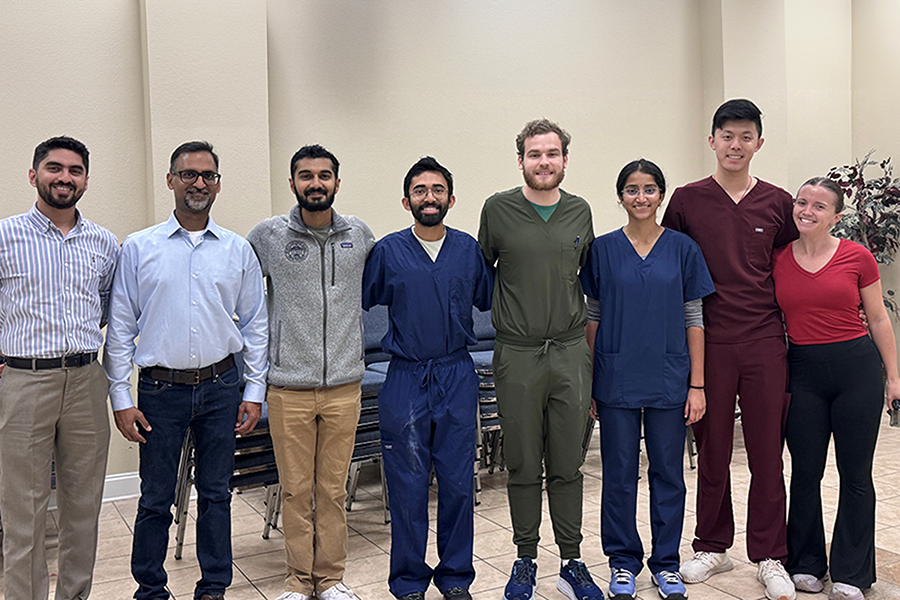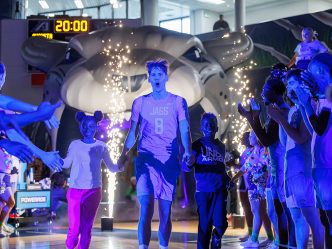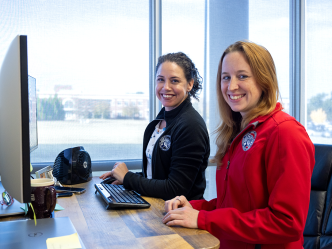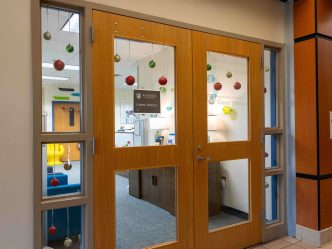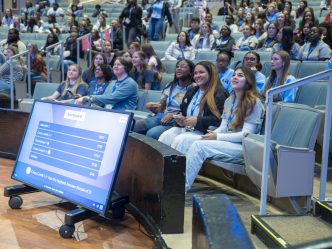Imagine this: You witness a car accident. You call 911, then you rush over to check the driver’s condition. Upon walking up to the car, you see the driver has a gash on their leg. They look like they’re breathing, but their eyes aren’t open, and they’re not responding to anything you say. You check for a pulse, and it’s barely more than a few beats per minute.
The ambulance is nowhere in sight, and you have no idea what to do.
The Community Initiative First Response organization at Augusta University is trying to change that.
What is CIFR?
“The main purpose of this organization is to go into the community and train people like kids or young adults about how to manage crisis situations,” said Vikas Kumar, MD, an anesthesiologist, intensivist, associate professor in the Medical College of Georgia at Augusta University and faculty sponsor for CIFR.
Since 2017, workshops have been held for local schools, including Lakeside High School, Evans High School, Stallings Island Middle School, A.R. Johnson Health Science and Engineering Magnet School, C.T. Walker Magnet School and Blue Ridge Elementary School at AU’s Interdisciplinary Simulation Center. The last workshop was in November.
“The main purpose of this organization is to do something before help arrives,” he said. “So if an accident happens, you call 911. It’s going to take about six to eight minutes by the time the ambulance comes. That six to eight minutes is very valuable time. If I’m not doing anything, then the patient will just go downhill. So this course teaches us, what can you do in those eight to 10 minutes?”
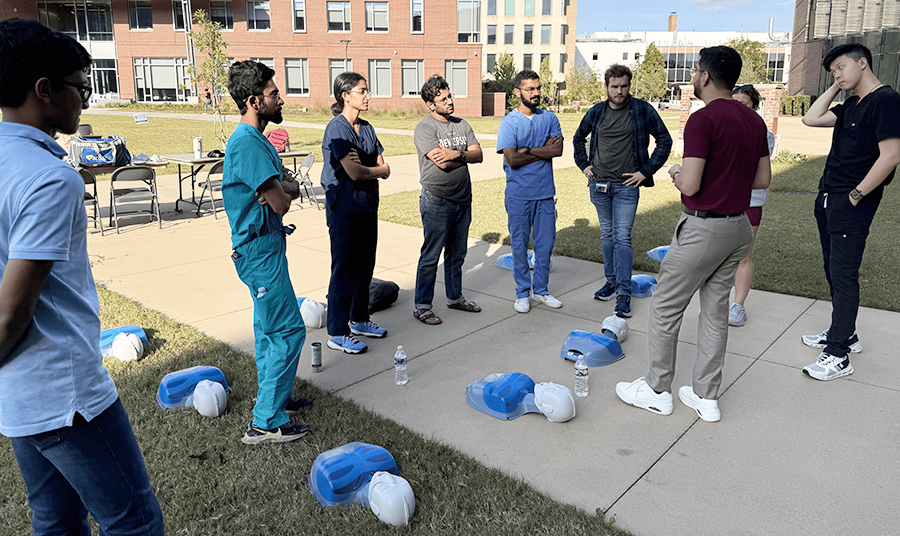
The volunteer-based organization is run by a group of medical students at MCG, and students stay in the program for about a year.
They visit local schools or the simulation center on campus and teach students what to do for someone experiencing a medical emergency, like cardiac arrest, choking, heat stroke, anaphylaxis, burns and bleeding, with plans to expand the program to teach adults, as well.
One of the main practices they focus on, though, is CPR.
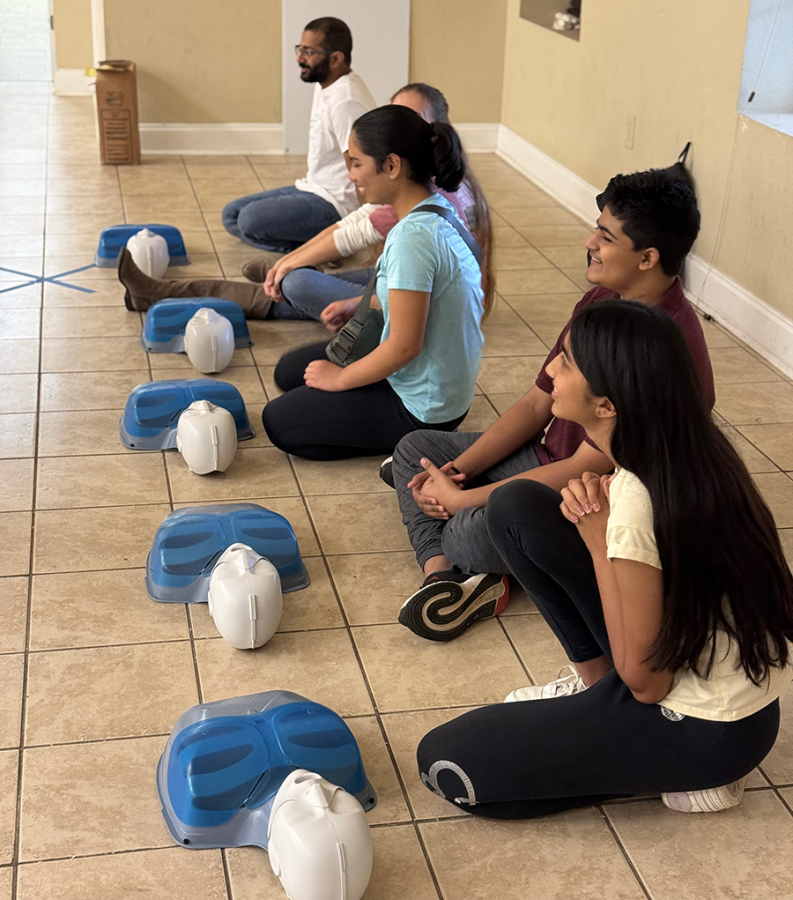
According to the American Heart Association, only about 40% of people who experience cardiac arrest outside of a hospital receive bystander CPR before professional help arrives.
“It’s super important because if you can get onto the chest and do compressions as soon as someone goes down, that is the best thing you can do,” said Jordan Cramer, MD, a critical care fellow at Wellstar MCG Health and a member of CIFR. “That is what truly makes the hugest difference when you come into the hospital. So for people to know how to do CPR correctly and get on the chest early and be doing compressions early gives me all the hope in the world to be able to actually get someone back.”

While saving lives is the goal, it’s also about having fun.
“It’s just fun to see kids get excited about that and to be able to do that because that’s why I chose that specialty, right?” Kramer said. “I like doing that stuff so that I get to teach something I like to do.”
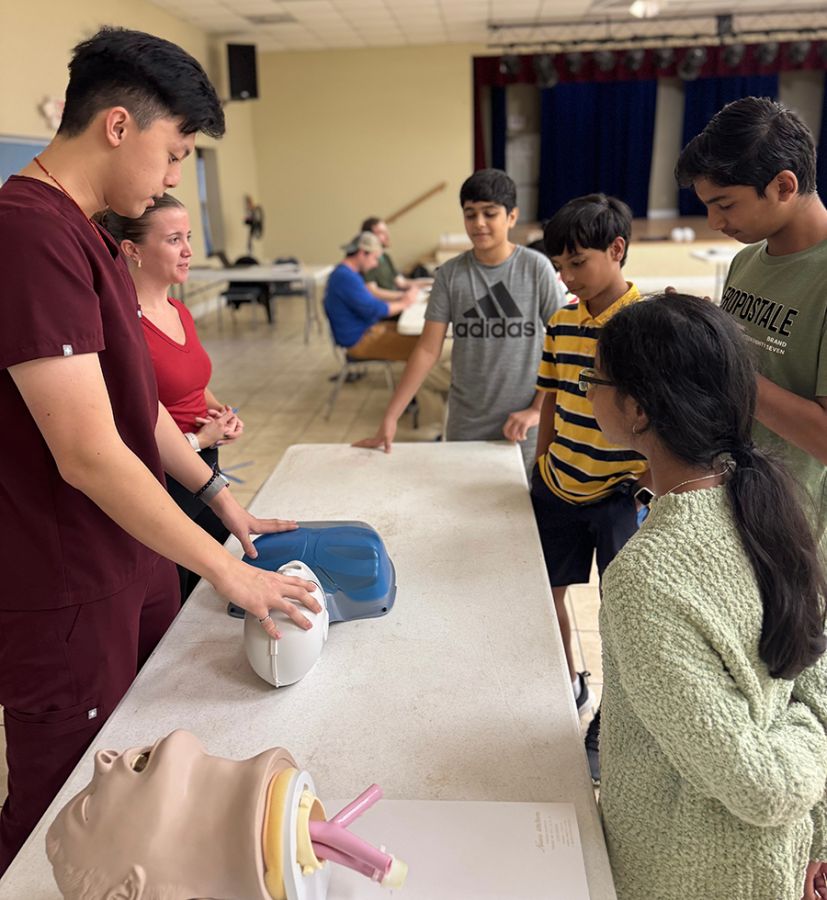
Collaborations
To stretch the organization’s reach further into the region, CIFR leaders recently met with the American Red Cross of East Central Georgia.
“We are going to collaborate and make it at a higher level. We will involve the ambulance, the fire ambulance and the real EMS people there, too. So they will also come to the scene, and then we create more realistic scenarios,” Kumar said.
Members of CIFR also collaborate with and have received training from other global first-response organizations, most notably First Response Initiative of Pakistan.
In fact, the idea for CIFR originally came from FRIP, which was founded in 2010.
“The main reason was that there’s a city, one of the largest cities in the world –Karachi – and there was a devastating bomb blast there at a police headquarters in 2010,” said Imran Raza, MD, president of FRIP. “The founders of this organization, who were medical students at the time, rushed to the scene and witnessed the immense challenges faced by the EMS due to a limited number of personnel and overwhelming scale of casualties. That pivotal moment inspired the creation of FRIP, with a mission to equip the masses with basic life-saving skills to set up and make a difference in emergencies.”
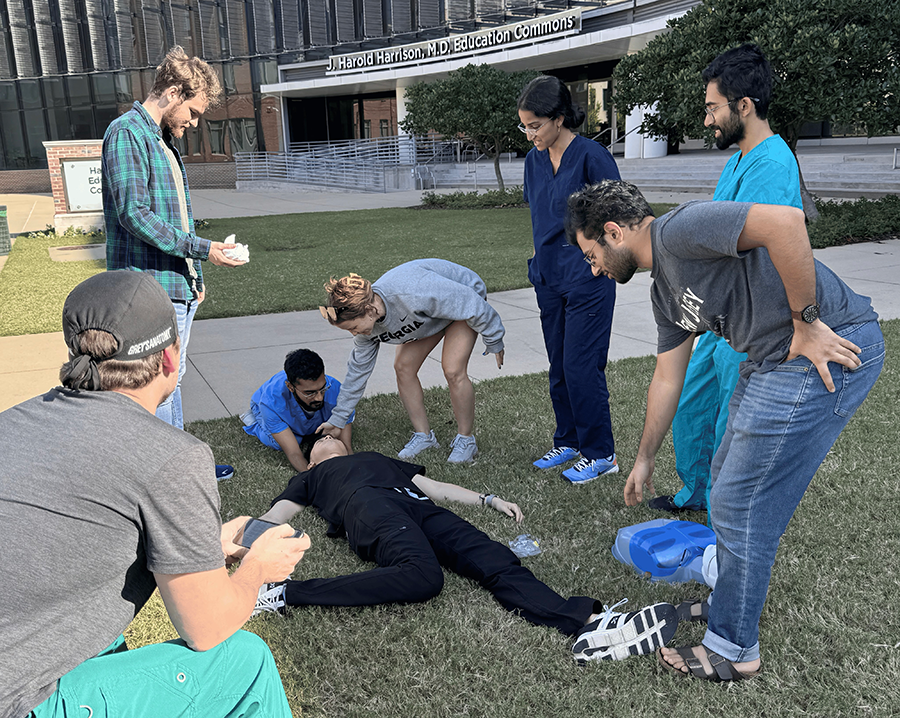
Raza said, after seeing the lack of preparedness, the medical students in Pakistan created an organization used to train first responders on how to manage mobs and mass-casualty situations. It’s been 14 years since then, and the organization has grown greatly and trained thousands of people in its community.
Despite challenges like different time zones in Augusta and Pakistan and physical training barriers, the FRIP team successfully conducted a hybrid training course for the CIFR team, combining virtual sessions with on-ground training. Raza even flew to Augusta to ensure a comprehensive learning experience.
“I connected with Dr. Kumar, and we envisioned a workshop based on the same model that we use in Pakistan, where we train medical students first, who then go into the community and train others, including students, children and people from all walks of life,” Raza said.
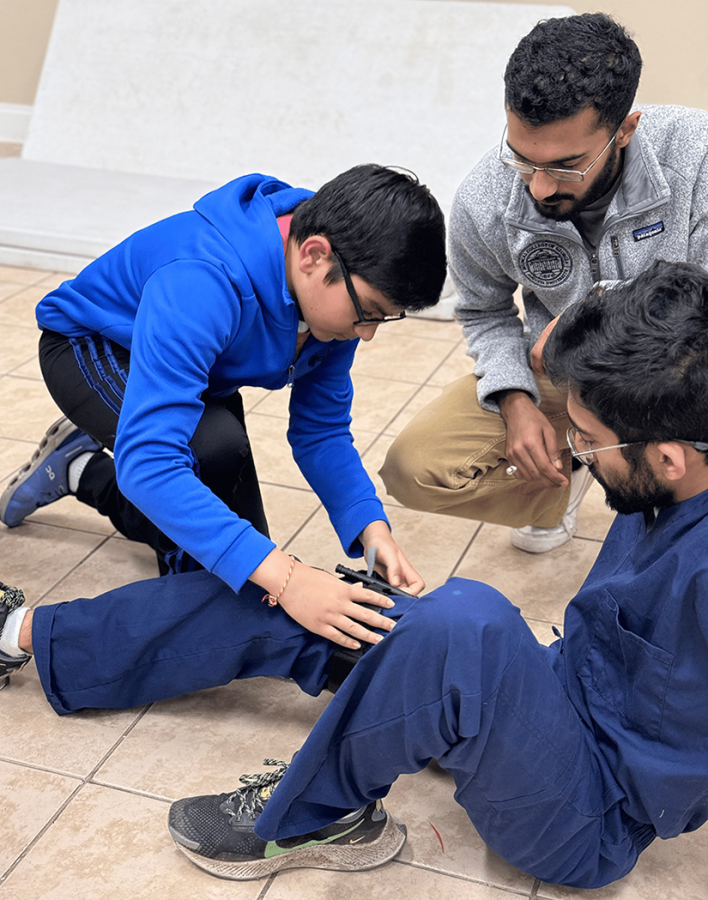
After completing the two-day course, the students in CIFR were certified as instructors.
“It was interesting seeing their approach to working emergencies in another country and just seeing the similarities to approaching some of these situations,” said Nikhil Jaganathan. “And ultimately, just having another perspective from another medical institution, I think that was very valuable and helped us become more effective instructors.”
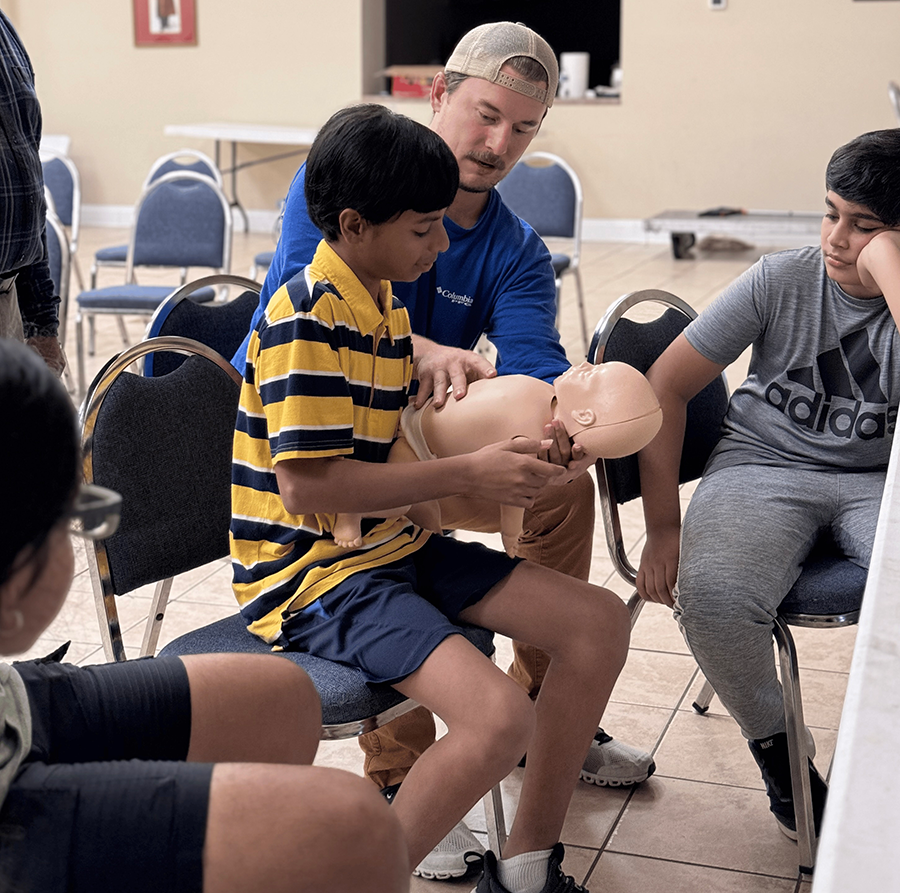
CIFR collects data on the trainees’ first-aid knowledge before and after the workshop. Members say there is a massive difference, with about 90% more skills being learned.
The most recent workshop for middle and high school students in Augusta was in November, and it left the medical students feeling rewarded.
“It was very rewarding to be able to see so many kids be so engaged and retain all the knowledge that we were trying to pass on,” said Dipen Mehta. “Me and Nikhil were actually in the bleeding station, so we were teaching the kids how to control bleeds, and we had some fake blood. The kids were always very intrigued with that. So that was pretty fun.”
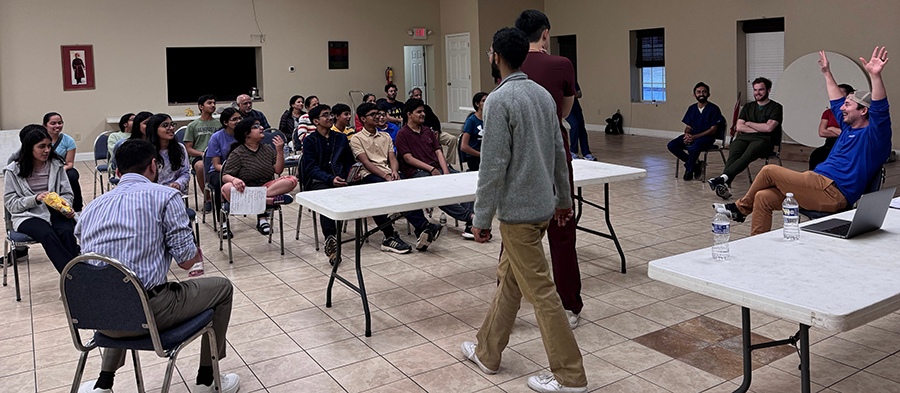
Plans for the future
As CIFR grows, Kumar has goals in mind for what the program will offer. He wants to collaborate with more agencies, cover more scenarios like active shooter response training, trauma management and disaster management and create CIFR clubs at local schools to facilitate communications.
Local schools participating in the workshops this year are still to be decided.
For big events where there will need to be all boots on the ground, FRIP would like to create a joint mass disaster task force with CIFR.
“With the increasing prevalence of these hurricanes and other natural disasters, mass casualties from traffic accidents, fires and shootings, we need people from the common ground, not just medical students and medical professionals, but community people to come forward and help in time of need,” Raza said. “And we do have a big shortage of medical personnel, and they cannot be available at all times during catastrophic events. So, in that moment, we need the general population to step up and help, and that’s exactly what our goal is.”
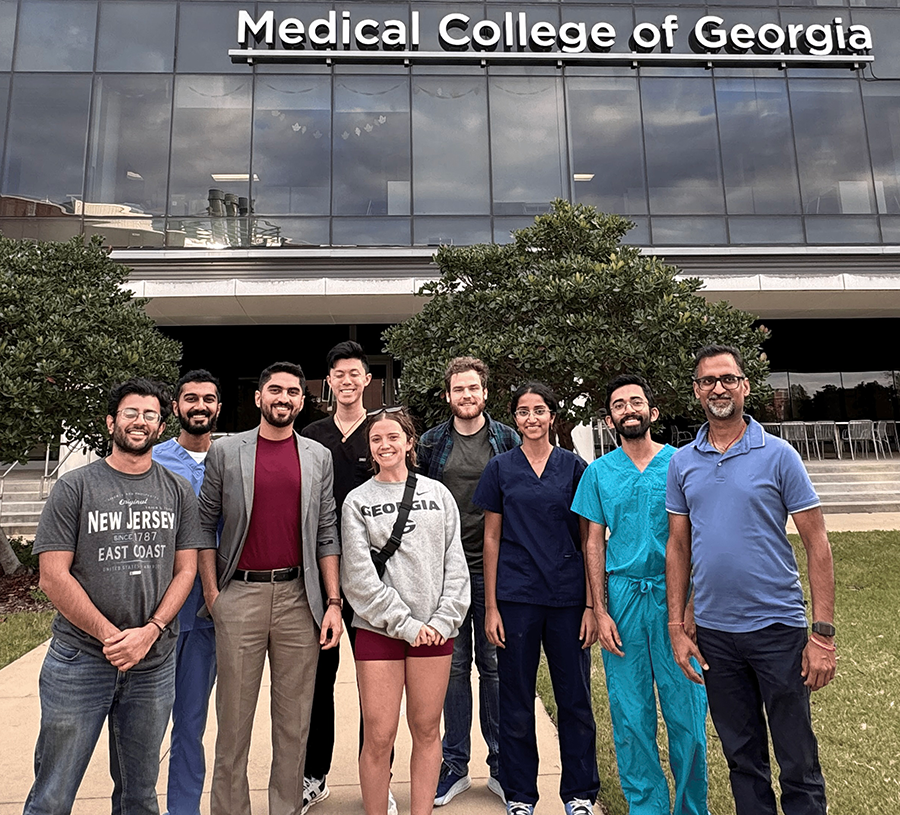
 Augusta University
Augusta University
